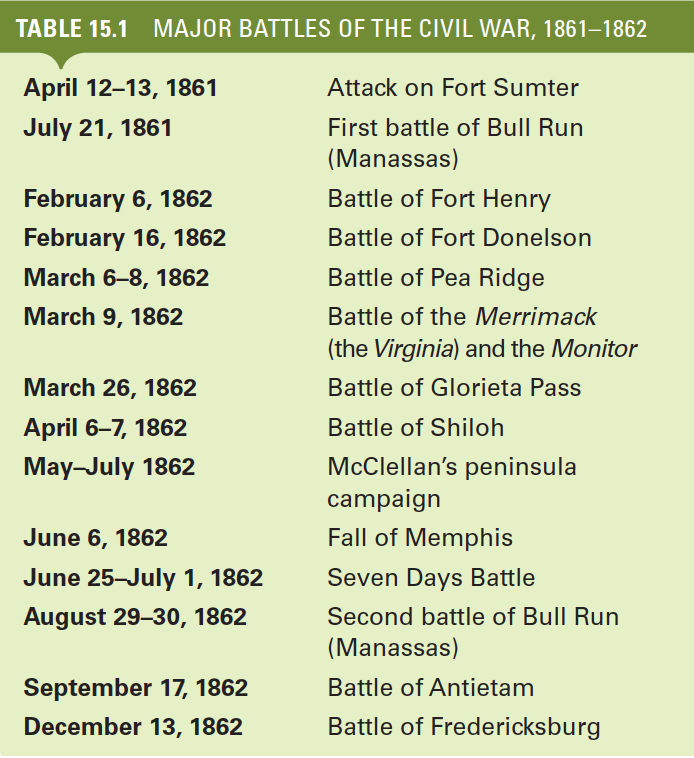The Atlantic Theater.
Printed Page 398 Chapter Chronology
The Atlantic Theater. When the war began, the U.S. Navy's blockade fleet consisted of about three dozen ships to patrol more than 3,500 miles of southern coastline, and rebel merchant ships were able to slip in and out of southern ports nearly at will. Taking on cargoes in the Caribbean, sleek Confederate blockade runners brought in vital supplies — guns and medicine. But with the U.S. Navy commissioning a new blockader almost weekly, the naval fleet eventually numbered 150 ships on duty, and the Union navy dramatically improved its score.

Unable to build a conventional navy equal to the expanding U.S. fleet, the Confederates experimented with a radical new maritime design: the ironclad warship. At Norfolk, Virginia, the wooden hull of the Merrimack was layered with two-inch-thick armor plate. Rechristened Virginia, the ship steamed out in March 1862 and sank two wooden federal ships (see Map 15.2). When the Virginia returned to finish off the federal blockaders the next morning, it was challenged by the Monitor, a federal ironclad of even more radical design, topped with a revolving turret holding two eleven-inch guns. On March 9, the two ships hurled shells at each other for two hours, but the battle ended in a draw.
The Confederacy never found a way to break the Union blockade despite exploring many naval innovations, including a new underwater vessel — the submarine. By 1865, the blockaders were intercepting about half of the southern ships attempting to break through. The Union navy, a southern naval officer observed, "shut the Confederacy out from the world, deprived it of supplies, weakened its military and naval strength." The Confederacy was sealed off, with devastating results.
Union blockade
The United States' use of its navy to patrol the southern coastline to restrict Confederate access to supplies. Over time, the blockade became increasingly effective and succeeded in depriving the Confederacy of vital supplies.